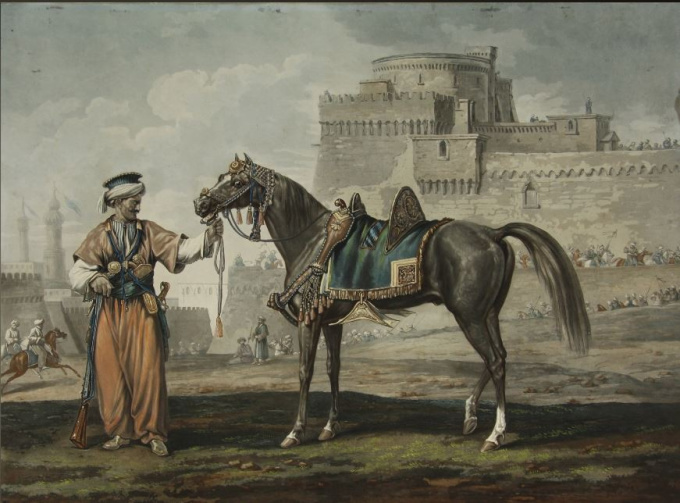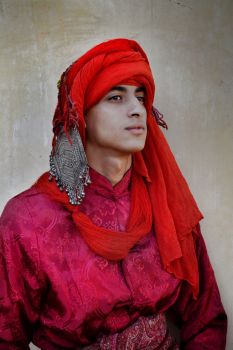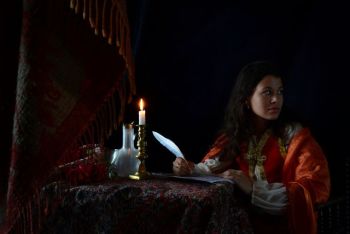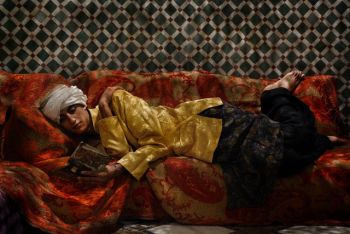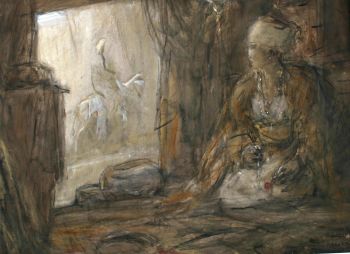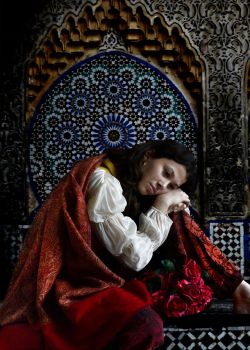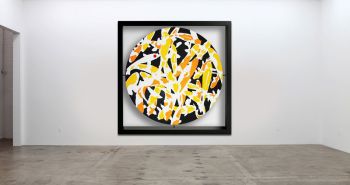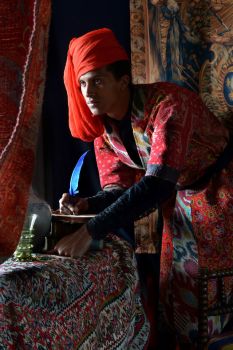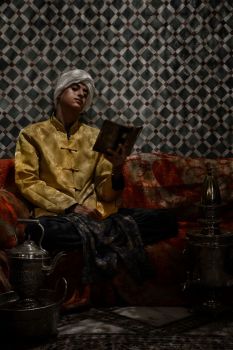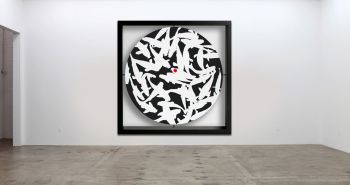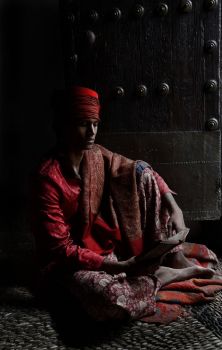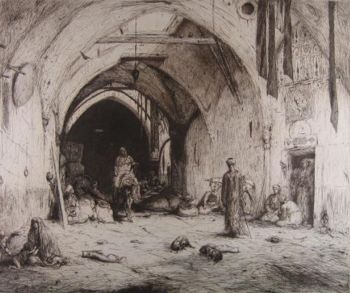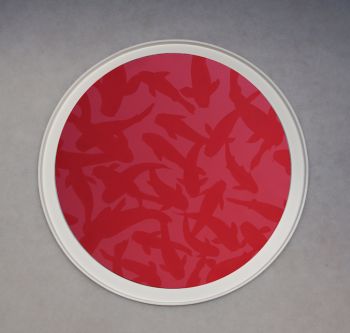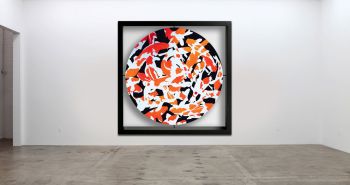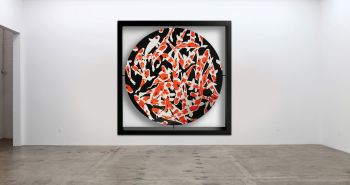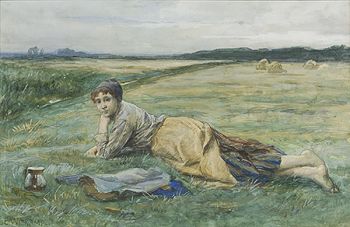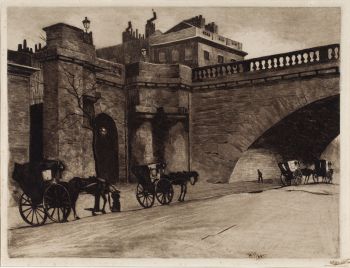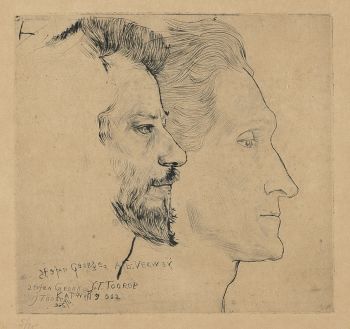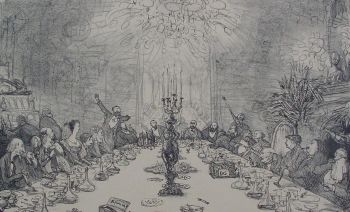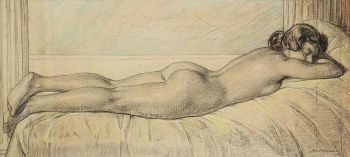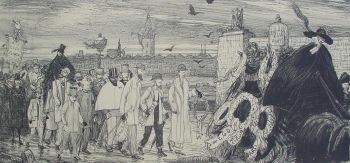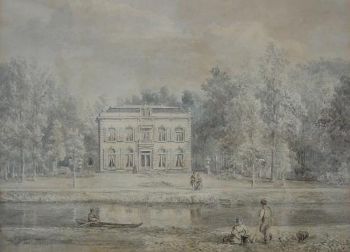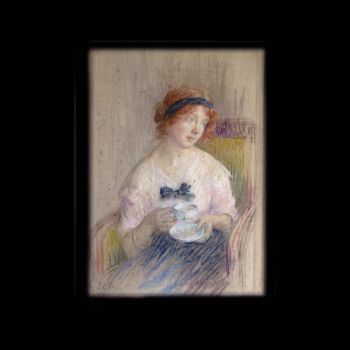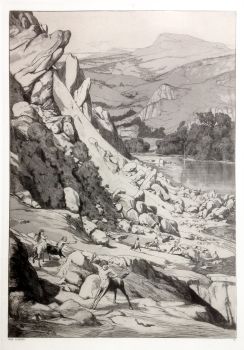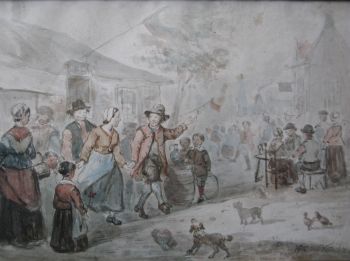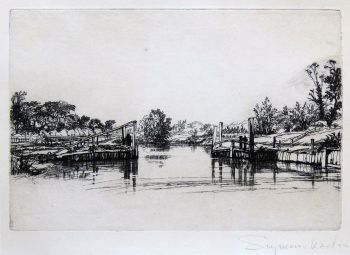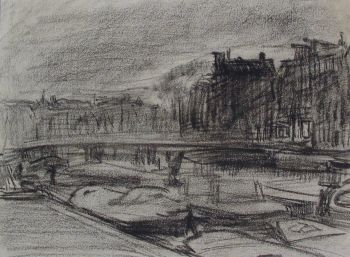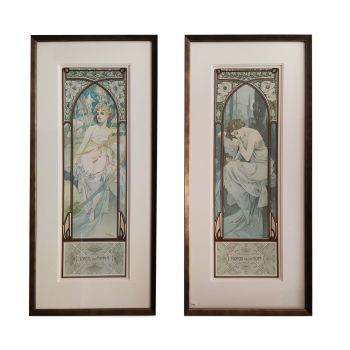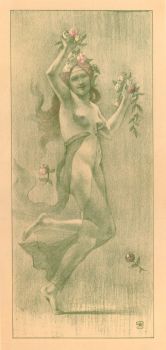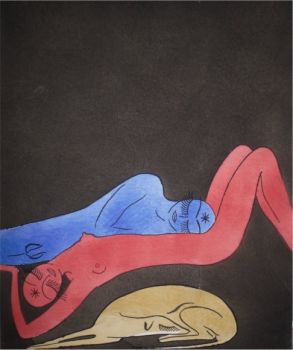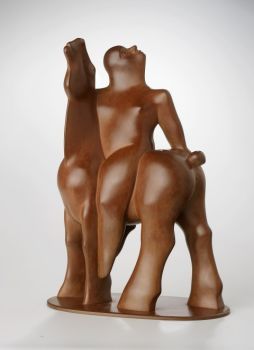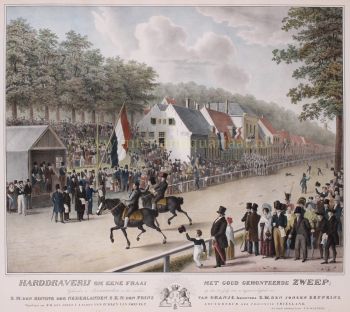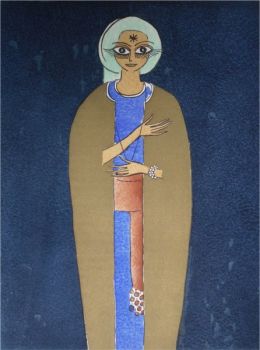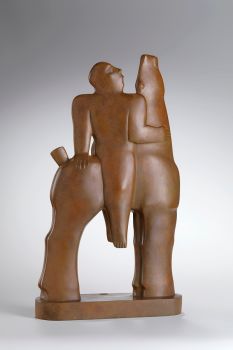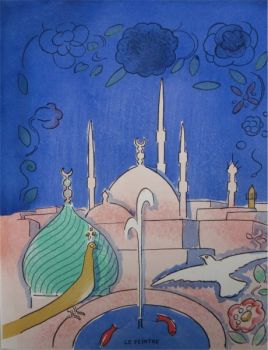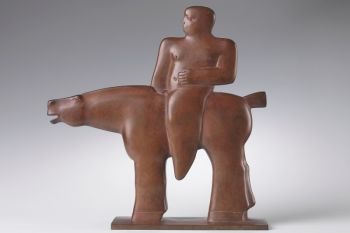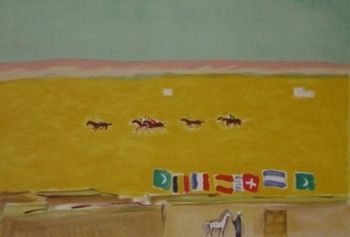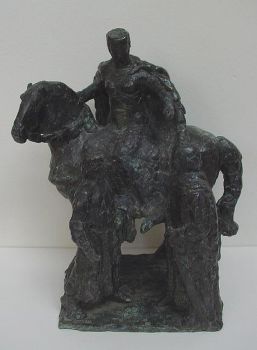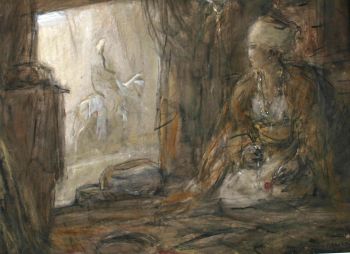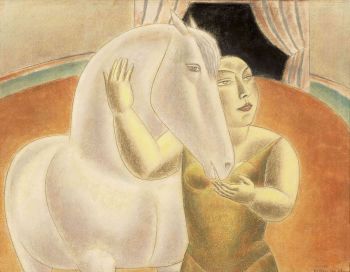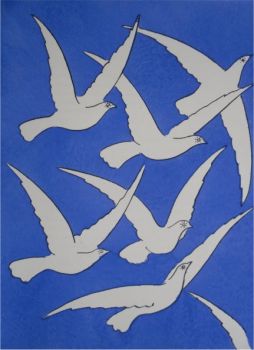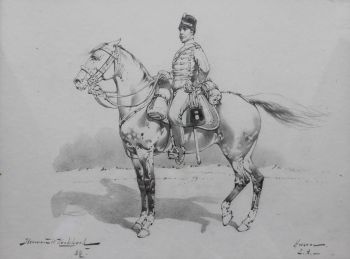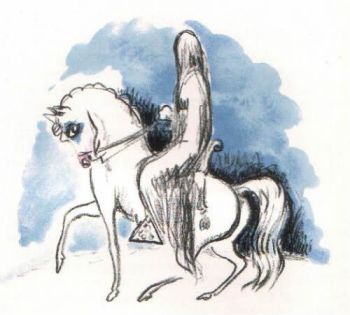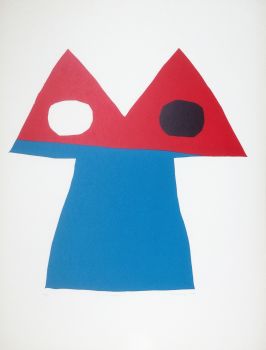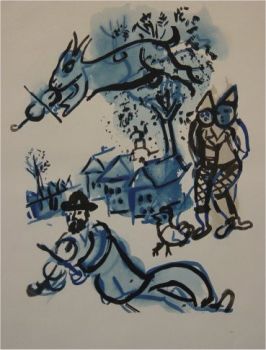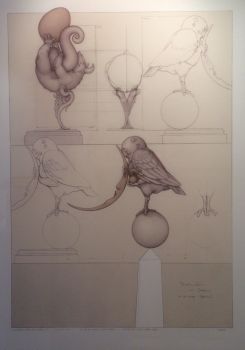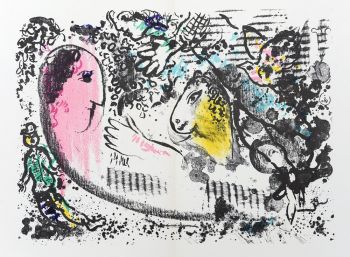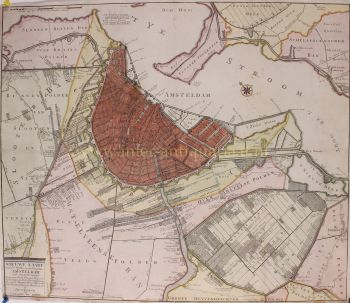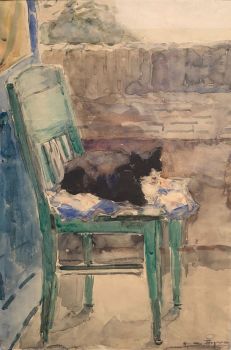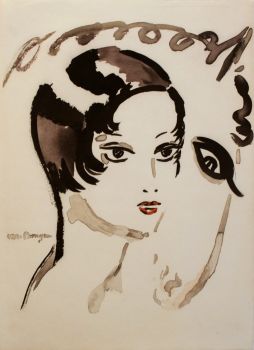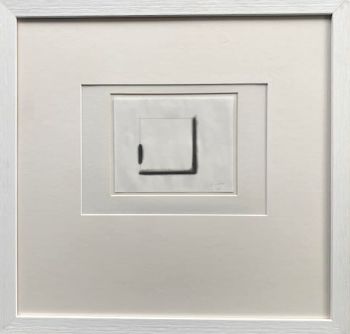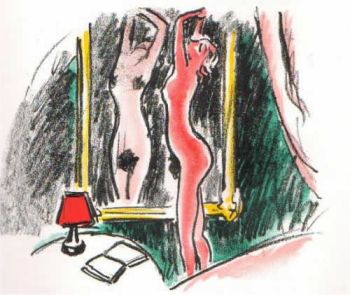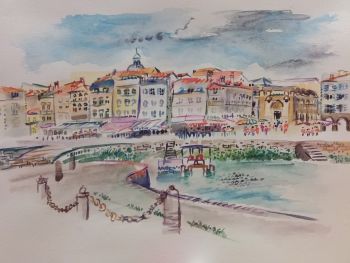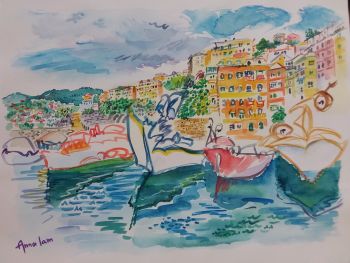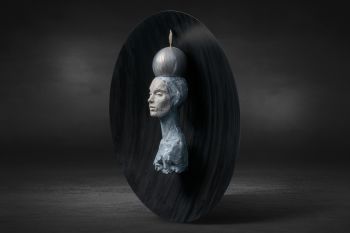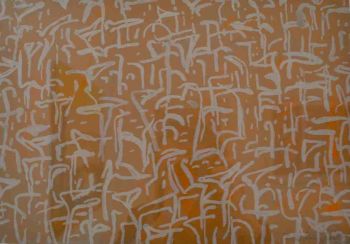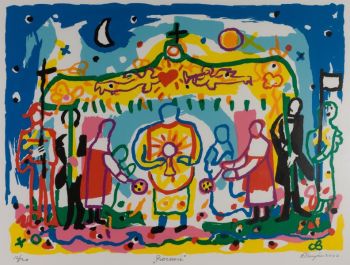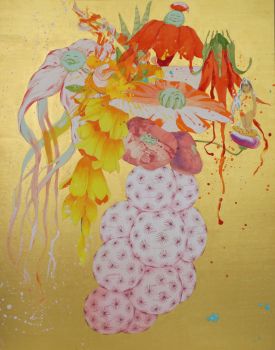Um mameluco conduzindo seu cavalo "e" luta entre um hussardo e um mameluco ". (2x) 1820
Carle Vernet
TintaPapelAquarela
73 ⨯ 94 cm
Atualmente indisponível via Gallerease
- Sobre arteCarle Vernet: 'A Mameluk Leading His Horse' and 'Fight between a hussar and Mameluk'.
Two aquatint etchings in color, enhanced with watercolor. Engraved by Philibert-Louis Debucourt (1755-1832) after paintings by Carle Vernet.
Printed by Daude and published by Charles Bance & Aumont in 1820.
The aquatint 'Combat' with the year 1811 in the plate for the year in which the original painting was made.
In 19th century frames with title description in French.
One aquatint with no margins, the other with folded margins.
Antoine Charles Horace (Carle) Vernet was a French painter, the youngest child of Claude Joseph Vernet, and the father of Horace Vernet. Born in Bordeaux, Vernet was a pupil of Nicolas-Bernard Lépicié. After being awarded the Prix de Rome in 1782, the painter spent some time in Rome. Vernet joined the Paris painting academy in the course of the same year as the outbreak of the French Revolution. 1799 was a crucial turning point in Vernet’s oeuvre: he exhibited drawings from Napoleon’s Italian campaign in a new and original style, which has prompted scholars to argue that Vernet’s contribution was essential in introducing strategy and verisimilitude in contemporary battle painting. This was in large part due to his exceptional ability to paint horses. Napoleon awarded him the Legion of Honour. Louis XVIII awarded him the Order of Saint Michael.
These aquatints depict Mameluk soldiers, renowned for their ferocity and superb abilities as cavalrymen. A Cairene citadel can be seen in the background. The Mameluks began as a slave warrior caste in the 9th century, created by Muslim rulers. They later became landowners and rulers in their own right, primarily in Egypt. By the Napoleonic era, their influence was on the decline, however, they were still a fearsome fighting force. Napoleon defeated the Mameluk army when he invaded Egypt in 1798, but was greatly impressed with their courage. He created a special Mameluk corps in the French army, and he, himself, had a Mameluk body guard named Roustan. In one of these aquatints, the Mameluk is armed with a scimitar, rifle and brace of pistols, and wears the uniform of the Napoleonic squadron before 1804: the green cahouk (hat) wrapped with a white turban, red sarousal (trousers), loose white shirt and waistcoat. - Sobre artistaNascido em Bordéus, Vernet foi aluno do pai e de Nicolas-Bernard Lépicié. Estranhamente, depois de vencer o Grande Prêmio (1782), seu pai teve que chamá-lo de volta de Roma para a França para impedi-lo de entrar em um mosteiro. Em seu Triunfo de Aemilius Paulus, ele rompeu com a tradição e desenhou o cavalo com as formas que aprendera da natureza em estábulos e escolas de equitação. Suas peças de caça, raças, paisagens e trabalho como litógrafo também foram muito populares. A irmã de Carle foi executada pela guilhotina durante a Revolução. Depois disso, ele desistiu da arte. O forno de gesso em Montmartre Quando ele voltou a produzir sob o Diretório Francês (1795-1799), seu estilo mudou radicalmente. Ele começou a desenhar batalhas e campanhas de detalhes minuciosos para glorificar Napoleão. Seus desenhos da campanha italiana de Napoleão foram aclamados, assim como a Batalha de Marengo, e por sua Manhã de Austerlitz Napoleão concedeu-lhe a Legião de Honra. Luís XVIII da França concedeu-lhe a Ordem de São Miguel. Posteriormente, ele se destacou em cenas de caça e representações de cavalos. Além de pintor e litógrafo, Carle Vernet era um ávido cavaleiro. Poucos dias antes de sua morte, aos setenta e oito anos, ele foi visto correndo como se fosse um jovem alegre. Ele morreu em Paris.
Artwork details
Categoria
Assuntos]
Estilo
Material e Técnica
Cor
Related artworks
- 1 - 4 / 21
Willem Witsen
Waiting carriages in front of Waterloo Bridge1850 - 1900
Preço em pedidoKunsthandel Pygmalion
1 - 4 / 24Willem Witsen
Waiting carriages in front of Waterloo Bridge1850 - 1900
Preço em pedidoKunsthandel Pygmalion
1 - 4 / 24- 1 - 4 / 24

